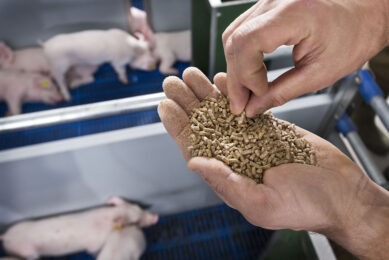What the textbooks don’t tell you about… Imprinting
In a very long career in and around pig production, I have seen many good ideas – some of them brilliant – that for various reasons, have never taken off. Some due to apathy (too much of this in my opinion), or down to expense, others from poor promotion and a few, to my mind, from quite unfathomable reasons as generally the reports about them were very favourable.
Innovations such as the Pig Train, the Stanford creep feeder – way ahead of its time – the farrowing box, the Cusum graph (used on the rest-room wall to motivate stockpersons), the brilliantly simple concept of the PigTales record system, the ‘profit box’ idea likewise, and something of major importance here now, which looks – or I hope doesnotlook – to be heading for the dustbin of history like the others.
Challenge Feeding
This latter is the clever idea of ‘Challenge Feeding’, which goes some way towards identifying the current degree of immune status in growing pigs and then altering the nutrient intake to match it, thus saving food and allowing the growers genetic potential performance to be achieved. The original concept, already ten years old, was held up by the lack of an affordable and accurate hand-held deep-muscle scanner for use on the farm, but now Schippers have one. I’ll write about this soon, as it deserves a second look with these new interacting viruses snapping at our heels. But I digress.
‘Imprinting’ never took off either
This imaginative concept of imprinting was pioneered by a Swiss firm in the early 1970s. They found that if afat-solubleflavour was added to the sows’ lactation feed – or as a top-dressing to the late pregnancy diet about 14 days before farrowing, then the sucklers were accustomed to this flavour in their mother’s milk virtually from birth, with sows milk being very high in fat.
If thesameflavour is added to the creep feed, then the piglets should start to eat it earlier, consume more, get a better start up the growth curve thus getting to slaughter sooner. A ‘smoothie’ for sucklers, in other words! The animal behaviourists call it ‘accustomisation’ – a bit different from ‘habituation’, which is an acquired habit. In this case the sucklers are virtually born with the ‘habit’ – they didn’t have to learn it.
Flavour
I’m told the flavour only takes 18 hours to be detected in the sows’ milk, which avoids any need to top-dress it on to the last few pregnancy feeds. The idea can be continued on into the ‘Link Feed’ to reduce the post-weaning check to growth. The idea also takes the strain off the sow as the piglets get more of their nutrients from another source to that of their mother’s milk. This provides a clue to why it was not taken up by breeders 35 years ago.
So why was it abandoned?
Think back to those 35 years. In the 1970s creep feeding was considered expensive and a chore. We had litters of ten if we were lucky and the sow of the time could provide plenty of sustenance for them to grow at 150 g/day which was par for the course. Today’s target is 250 g/day growth to weaning at 28 days (British Pig Executive, BPEX, 2009). The situation today is much more of a problem as the sow struggles to eat enough to provide milk for a modern litter which can put on twice the amount of potential litter liveweight by 28 day weaning (see Table 1).
So the demand on the sow is double today to what it was in 1970, which puts an unassailable case for creep feeding as soon into lactation as possible to help the sow raise the modern litter when like in the 1970s she only provides about 4.25 g of milk for each 1 g of piglet gain.
Did imprinting work?
It seems so. The trial work of the 1970s (three commercial firms; one feed firm and two independent research stations) provided positive results – imprinting vs either no flavours or against a conventional flavour in the creep.
Campbell (1976) showed feed intake up 8.3% and ADG up 16.9% at weaning + three weeks.
King (1979) 8.5% and 10.5 % respectively – both are published independent research trials.
Firmenich themselves showed similar commercial results from six trials as well as double the amount of time spent at the creep hopper in one period – 73% vs 36% – same conditions/same time.
And the extra cost?
I quote from a report of the time (Pig Farmer Australia, Dec 1976). “The cost, including the flavour given to the sow, is less than 1% of the value of the food eaten by her piglets to eight weeks of age. The return on investment is 3 to 20 times higher than the cost of flavouring.” Things will be more expensive now, but that is an encouragingly low base from which to start. The textbooks are totally silent on this idea. Time to have another look at it?
Join 18,000+ subscribers
Subscribe to our newsletter to stay updated about all the need-to-know content in the pigsector, three times a week. Beheer
Beheer










 WP Admin
WP Admin  Bewerk bericht
Bewerk bericht